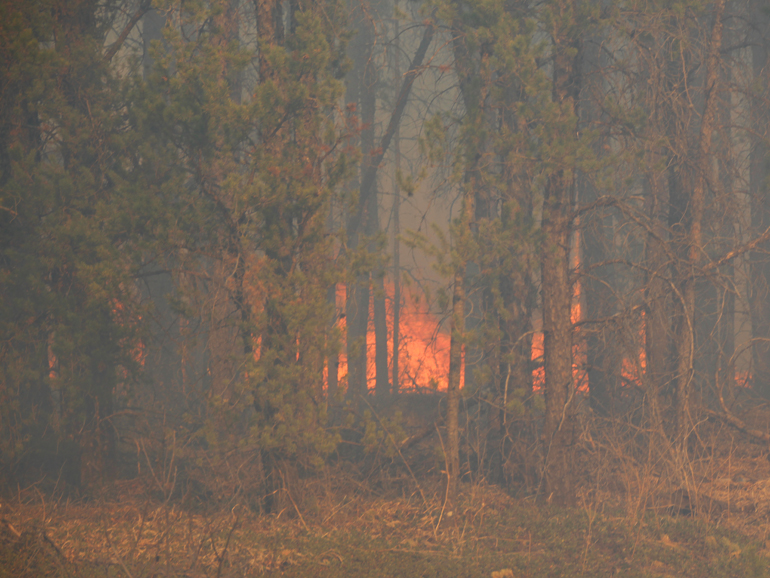A forest fire continues to burn out of control near the community of Badger.
Earl Simmons is Regional Field Supervisor with Manitoba Sustainable Development. He works out of the Lac du Bonnet office for the eastern region.
Simmons says more than 1,500 hectares have already burned and the fire is at least eight kilometres long. Because of the size of the fire, Simmons says it is larger than the local district's capability and so they have asked for incident management teams from a higher level to take over. This is currently the largest fire burning out of control in our province.
As of 3:30 Monday afternoon, Simmons says the fire is burning about three kilometres west of Badger.
"It's not in the proximity where we're concerned, we're just making preparations in the event that the winds do come close to it," he says.
According to Simmons, if or when the fire creeps too close for comfort for the community of Badger, the province will notify residents. There have been no evacuations and Simmons says no buildings have been lost in this fire.
The province is battling the fire with the help of five crews on the ground, two helicopters, heavy equipment and a tanker package which includes two water bombers and air traffic control. He says they also have assistance from the Ontario Ministry of Natural Resources with water bombers out of Kenora and Dryden.
Simmons says municipal fire departments in the eastern region will assist with value protection if needed. Value protection is where crews visit homes or other structures and mount sprinkler kits on buildings for protection.
Simmons says the change in wind direction Monday was not helpful. Because of the strong south wind on Sunday, the fire was long and narrow. When the wind shifted to the west Monday, Simmons says it started burning land to the east.
Not only is the wind not cooperating with firefighters, but neither is the slow start to spring. Simmons says they would normally scoop water from Whitemouth Lake, which would have a turnaround time of 10 or 12 minutes. But because it is still frozen, water bombers are needing to fly about 100 kilometres and instead look for open water near Seven Sisters and even Kenora.
"You're not as effective because you're only making one drop every half hour to an hour and then you are turning around having to go back and getting fuel," explains Simmons.
Simmons is reminding residents of the southeast that it is extremely dry out there and says the dead grass is explosive right now. In addition to the burn bans throughout the southeast, he says the province has also implemented Level One Travel Restrictions. That means they are not allowing motorized travel onto fireguard roads. They also are not allowing backcountry travel within eastern Manitoba without permits.
Meanwhile, the RM of Piney has declared a State of Emergency in order to prompt action to prevent harm or damage to the safety, health or welfare of persons located within the boundaries of the RM and to prevent damage to property within those boundaries.



















